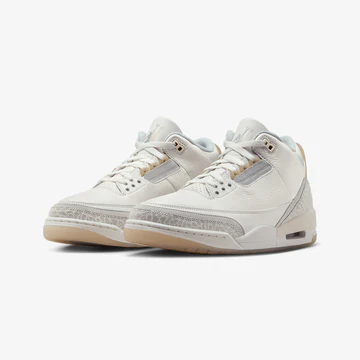Cupping therapy has become increasingly popular in recent years due to its wide range of potential health benefits. From improving circulation to relieving muscle tension and boosting overall energy levels, this ancient healing technique has gained a lot of attention. However, one question that often arises after a cupping session is, “How long do cupping marks last?” While cupping therapy is generally safe and beneficial, it can leave visible marks on the skin that can vary in size, shape, and color. In this guide, we’ll delve into the factors that affect the duration of these marks, how to care for them, and answer common questions about cupping marks.
What Is Cupping Therapy?
Before we dive into the specifics of cupping marks, it’s important to first understand what cupping therapy is and how it works. Cupping therapy involves the use of special cups placed on the skin to create suction. This suction is intended to increase blood flow to the treated area, loosen tight muscles, and promote healing. The cups may be made of glass, plastic, or silicone, and the suction can be applied in different ways – either by using heat or a mechanical pump.
The most common form of cupping is known as “dry cupping,” where the cups are placed on the skin without any incisions. During the session, blood is drawn to the surface of the skin, which can cause temporary bruising and marks. These marks are not a result of injury, but rather the skin’s response to the suction. In fact, they are often seen as a positive sign that the cupping therapy is working and stimulating blood flow.
How Long Do Cupping Marks Last?
The marks left by cupping therapy, also known as cupping bruises, can last anywhere from a few days to a couple of weeks, depending on several factors. It’s important to note that cupping marks are not permanent; they are temporary and usually fade as your body heals. However, the duration of the marks can vary based on individual circumstances. Let’s explore the factors that influence how long cupping marks last:
1. Intensity of the Cupping Session
One of the most significant factors affecting how long cupping marks last is the intensity of the cupping session. The strength of the suction applied during the treatment can directly impact the severity of the marks. If the cups are left on the skin for an extended period of time or if the suction is particularly strong, you may notice deeper and darker marks that will take longer to fade.
In contrast, a gentler cupping session with lighter suction may result in less noticeable marks that disappear more quickly. It’s also worth noting that the color of the marks can give you an indication of the level of intensity. Darker marks generally indicate that the suction was more intense and that blood was drawn from deeper layers of tissue.
2. Your Skin Type and Tone
Your skin type and complexion also play a significant role in how long cupping marks last. People with fair skin tend to notice the marks more easily, and they may last for a shorter period of time. On the other hand, individuals with darker skin tones may find that the cupping marks are less pronounced but may take longer to fade.
Additionally, if you have sensitive skin, you may experience longer-lasting marks due to the increased skin sensitivity. It’s essential to consider your skin’s unique characteristics when determining how long the cupping marks will remain visible.
3. Health Condition and Circulation
The overall health of your body, particularly your circulation, can influence how long cupping marks last. If you have poor circulation or an underlying health condition that affects blood flow, you might experience darker and more persistent marks. People who undergo cupping therapy for conditions like muscle tension, fibromyalgia, or chronic pain may notice longer-lasting marks as the therapy works to improve circulation and release built-up toxins.
4. Aftercare Practices
Proper aftercare is crucial when it comes to reducing the duration of cupping marks. Taking good care of your skin post-session can help accelerate the healing process and minimize the appearance of bruising. Here are some essential aftercare tips:
- Hydrate Your Skin: Applying a moisturizer or aloe vera gel to the treated area will help keep the skin hydrated and promote healing. Dry skin can make the marks appear more prominent and can slow down the healing process.
- Avoid Rubbing or Scratching: It’s important to resist the urge to scratch or rub the cupped area, as this can cause irritation and prolong the marks’ presence on the skin.
- Warm Compress: Gently applying a warm compress to the treated area can help improve circulation and speed up the healing of cupping marks.
- Rest: Resting and allowing your body to recover naturally will also contribute to faster healing.
5. Frequency of Cupping Sessions
The more frequently you undergo cupping therapy, the less likely you are to experience long-lasting marks. If you get cupping therapy regularly, your body will become accustomed to the treatment, and the marks may become less pronounced or fade faster over time. However, if it’s your first time, you may notice more prominent bruising that may take longer to fade.
How to Speed Up the Healing Process of Cupping Marks
While cupping marks are generally harmless and temporary, many people wonder if there’s anything they can do to speed up the healing process. Here are some practical tips for helping cupping marks heal faster:
- Gentle Massage: Lightly massaging the area with essential oils or a moisturizing cream can promote circulation and reduce the appearance of marks.
- Eat a Healthy Diet: Consuming foods rich in antioxidants, such as fruits and vegetables, can help support your body’s natural healing process. Foods that promote healthy blood flow, like garlic and turmeric, may also be beneficial.
- Cold Compress: If the cupping marks are still fresh and tender, applying a cold compress to the area can reduce swelling and discomfort.
- Avoid Sun Exposure: Sun exposure can darken cupping marks and make them more noticeable. It’s best to keep the treated areas covered or use sunscreen to protect your skin from the sun’s harmful rays.
How Long Do Cupping Marks Typically Last?
As a general rule, cupping marks can last anywhere from 2 to 14 days. For most people, the marks will start to fade after a few days, especially if the suction was mild. However, if the suction was intense or if the marks are darker in color, it may take up to two weeks for them to completely disappear.
In some cases, particularly for individuals with sensitive skin or underlying health conditions, cupping marks may last a little longer. It’s important to be patient and allow your body time to heal naturally. However, if the marks do not fade after a few weeks or if they are accompanied by other symptoms like swelling or pain, it’s a good idea to consult with a healthcare professional.
When Should You Seek Medical Advice?
Cupping therapy is generally considered safe, but it’s important to be aware of any potential complications. While cupping marks are usually harmless, there are some situations where it’s advisable to seek medical attention:
- If the marks do not fade after several weeks.
- If you experience excessive pain, swelling, or bruising in the treated area.
- If you develop any blisters, open wounds, or skin infections in the cupped areas.
If any of these concerns arise, it’s best to consult with a healthcare provider to rule out any complications.
Learn More About Cupping Therapy
If you’re curious to learn more about cupping therapy, its benefits, and how it works, be sure to check out this comprehensive guide to cupping therapy. You’ll find valuable insights and detailed information to help you get the most out of your cupping sessions.
Cupping therapy is a fascinating treatment method that has been used for thousands of years. By understanding the factors that influence how long cupping marks last, as well as the proper aftercare, you can maximize the benefits of this healing technique while minimizing any visible side effects.
Conclusion
Cupping marks are a natural and temporary part of the healing process. The length of time they last depends on several factors, including the intensity of the session, your skin type, and your overall health. While the marks may last anywhere from a few days to two weeks, they are usually harmless and will fade on their own over time. With proper aftercare, you can help speed up the healing process and minimize the appearance of the marks.
Remember, cupping therapy is an effective and safe treatment for a variety of health concerns. If you’re still wondering How Long Do Cupping Marks Last, you can refer to this article and other resources to deepen your understanding of the treatment and its effects.












